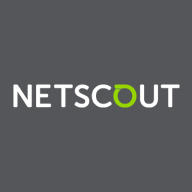


A10 Thunder TPS and Arbor DDoS are competitors in the DDoS protection market. Arbor DDoS often has the edge due to its advanced features, despite its higher cost.
Features: A10 Thunder TPS offers comprehensive threat protection with automated mitigation, hardware acceleration for multi-vector attacks, and a user-friendly GUI. Arbor DDoS provides extensive threat intelligence, packet capture capabilities, and AI-driven anomaly detection.
Room for Improvement: A10 Thunder TPS could enhance reporting features and expand integration with third-party tools. It also has room to improve automated response times. Arbor DDoS may benefit from simplifying its deployment process and better handling large-scale attacks without additional hardware investments. It can also improve feature accessibility in global contexts.
Ease of Deployment and Customer Service: A10 Thunder TPS is known for its straightforward deployment and responsive customer support. Arbor DDoS provides robust customer service but may require more effort during deployment due to its complexity.
Pricing and ROI: A10 Thunder TPS presents a more affordable initial setup with significant ROI potential due to its efficient pricing. Arbor DDoS, while costlier, tends to deliver greater long-term value with its advanced protection capabilities.
WordPress security can be tricky, and that's where Cloudflare can be absolutely helpful for small businesses.
For the small project I was working on, using the basic tier provided a huge improvement at zero cost.
This would help us address issues promptly, especially during unforeseen events like DDoS attacks.
Cloudflare does not offer hands-on technical support to fix customer problems but rather a self-service model.
The key factor is the language in which the support is offered, which, in this case, is in Thai.
The technical support was quick and accepted my requests.
The technical support team is very effective in resolving issues.
Although the team is good, they are not fast, and they lack the skills to manage dynamic attackers.
Support for Arbor DDoS deserves a rating of 10 because when there is a problem with implementation, the people I work with are the best.
It is a SaaS tool, but the fact that they have workloads deployed across the world proves that it is a highly scalable tool.
The tool offers very good performance, even during high-traffic periods.
I rate the solution’s scalability an eight out of ten.
Without accessible documentation, setting up can be time-consuming.
This would enhance the knowledge about scalability options available for Arbor DDoS, making it more accessible and useful for users.
They need to purchase boxes monthly to expand their bandwidths, and these new boxes can be added to the installed base very easily.
I find Arbor DDoS to be very scalable.
For DDoS protection, I would not recommend Cloudflare.
I rate the solution’s stability an eight out of ten.
The service is very stable with no impacts during high-traffic periods.
It is a very stable product.
Arbor DDoS is very stable.
There's a need for improvement in areas like AI-based DDoS attacks and Layer 7 WAF features.
Despite these challenges, overall, Cloudflare remains the preferred solution compared to Azure, AWS CloudFront, and Google Cloud Armor.
The timing aspect can lead to it being considered overpriced. This is a particular concern we have with Cloudflare, as they may struggle with accurately detecting the client.
We had to find workarounds for issues like A10 blocking necessary traffic, sometimes leading to decreased security.
I would like to see an option to decrypt the traffic with Arbor DDoS, as some clients are interested in this, particularly for application layer attacks on port 443.
Enhancing the handshakes between Arbor DDoS and third-party solutions is essential for obtaining better and real-time data that supports any organization’s support team effectively.
I would like to see a roadmap for one or two years, and it is tough to predict what will happen in that timeframe without a clearer description.
That's where Cloudflare shines for smaller businesses – it's ten times cheaper than Akamai.
I find it to be cheap.
I think they should consider reevaluating the pricing for support, as it can be quite high.
The global price list is not accessible, making it difficult to work.
The prices for Arbor DDoS are expensive.
For some customers, the cost is expensive, but for enterprises looking to protect their services, it is affordable.
The most valuable features of the solution are performance and security.
Techniques like minification and image compression reduce the size of assets, leading to better performance and faster user load times.
The solution has been able to compare it to the market, and I think the product has taken great strides in automating quite a bit of things, and they use a lot of AI.
The vendor indicated that Thunder would not be supported, but I was able to add Thunder to the central console management.
That is an attack over 10 gigabit per second, and if an attack enters the telecommunication network, that will be a disaster for their customer, their services, and so on.
We have many updates for the library of different attacks, and they have artificial intelligence that automatically learns the process during different attacks.
The platform offers quick mitigation of attacks because Arbor DDoS uses BGP Flowspec, enabling very quick mitigation.
| Product | Market Share (%) |
|---|---|
| Cloudflare | 18.8% |
| Arbor DDoS | 11.4% |
| A10 Thunder TPS | 2.1% |
| Other | 67.69999999999999% |



| Company Size | Count |
|---|---|
| Small Business | 45 |
| Midsize Enterprise | 8 |
| Large Enterprise | 25 |
| Company Size | Count |
|---|---|
| Small Business | 6 |
| Midsize Enterprise | 4 |
| Large Enterprise | 5 |
| Company Size | Count |
|---|---|
| Small Business | 25 |
| Midsize Enterprise | 13 |
| Large Enterprise | 29 |
Cloudflare is a highly-regarded Content Delivery Network (CDN) and a Distributed Denial-of-Service (DDoS) protection solution. The robust global connectivity cloud platform that is Cloudflare ensures users are able to connect to the Internet quickly, securely, and reliably. Cloudflare is one of the world's largest networks in the marketplace today. Using Cloudflare, businesses, educational entities, NGOs, vloggers, bloggers, and anyone else with an internet presence can experience more secure, faster websites and applications.
Currently, there are millions of Internet locations on Cloudflare, and the Cloudflare network
continues to grow every day by the thousands. The solution is able to fulfill the requests for
millions of websites seamlessly and serves on average 45 million HTTP requests per second.
Cloudflare has safe, secure data centers in close to 300 cities worldwide to ensure every
client request is filled as quickly as possible. It is Cloudflare’s edge network that makes this
possible by keeping content and other services as close to each client as possible, so the
information requests are always only seconds away.
Many organizations that work in democracy, civil society, human rights, or the arts are able to
access Cloudflare's highest levels of protection for free via Project Galileo. Additionally, official
election websites can be secured from hacking and fraud through Cloudflare’s Project
Athenian, also at no additional cost.
Cloudflare can also help organizations of all sizes develop a robust zero-trust strategy to
ensure the highest levels of productivity and profitability. Employees, stakeholders, and end users have a greater level of satisfaction and overall improved user experience, which can, in
turn, result in higher revenues and overall ROI. Zero-trust and BYOD (bring your own device)
access ensure end users and employees always have the best resources and technology
available to them at all times.
Cloudflare benefits
Cloudflare has many benefits. Some of its most valuable benefits include:
- Faster load times
- Robust DNS security
- Intuitive cloud Web Application Firewall (WAF)
- Free universal SSL
- Image enhancement
- Automatic browser caching
- Next-generation cloud load balancer
- Accelerated Mobile Pages (AMP)
- Rate limiting
- Minification
- Zero-trust capabilities
- Cost-effective
- Reduced carbon footprint
Reviews from real users
“Many websites require an SSL certificate because they sell stuff and want SSL. Cloudflare
comes with an SSL certificate built in. It's automatic. You sign yourself up for Cloudflare, and
an SSL certificate automatically protects your website. If you have a connection between your
website and your host, the server, Cloudflare, and the host, you don't necessarily need a
certificate.” Spencer M., Owner at Tech Exchange
“What I like best about Cloudflare is that my company can use it to trace and manage
applications and monitor traffic. The solution tells you if there's a spike in traffic. Cloudflare
also sends you a link to check your equipment and deployment and track it through peering,
so it's a valuable tool.” Daniel P., Network Engineer at Ufinet
“The most valuable feature of Cloudflare is the GUI. You are able to control the solution very
well through the interface. There is a lot of functionality that is embedded in the service.” PeerSpot user, Competence Center Manager at a tech services company
The Thunder TPS is a family of high-performance DDoS defense solutions that detect and mitigate multi-vector DDoS attacks. Unlike traditional DDoS defenses that leave a wake of collateral damage against users, Thunder TPS applies a source-based defense-in-depth mitigation pipeline. This multimodal defense that includes actionable DDoS weapons intelligence, operator definable adaptive policies, and machine learning-powered Zero-Day Automated Protection (ZAP) blocks attackers while protecting real users.
The Thunder TPS is uniquely suited for communication service providers, online gaming, and enterprise network operators who protect large networks and need compact solutions with faster response from a fully automated, zero-touch defense during an attack.
Arbor DDoS provides effective mitigation against DDoS attacks with a user-friendly interface, integrating cloud and on-premise solutions for real-time traffic control and reporting. It supports large traffic volumes without latency, making it ideal for protecting online infrastructure.
Known for its intuitive GUI and rapid response, Arbor DDoS defends against complex DDoS threats using AI-driven anomaly detection and traffic categorization. It offers packet capture, robust reporting, and deployment flexibility, helping users maintain network stability and performance. While improvements in auto-mitigation, interface modernization, and scalability are needed, its hybrid protection approach efficiently secures networks for service providers and enterprises.
What are the key features of Arbor DDoS?Internet Service Providers and managed service providers utilize Arbor DDoS to secure network infrastructure and service availability. It's implemented in government and finance sectors for safeguarding customer websites and managing server traffic thresholds. Organizations deploy Arbor DDoS both on-premise and via cloud for extensive network protection.
We monitor all Distributed Denial-of-Service (DDoS) Protection reviews to prevent fraudulent reviews and keep review quality high. We do not post reviews by company employees or direct competitors. We validate each review for authenticity via cross-reference with LinkedIn, and personal follow-up with the reviewer when necessary.